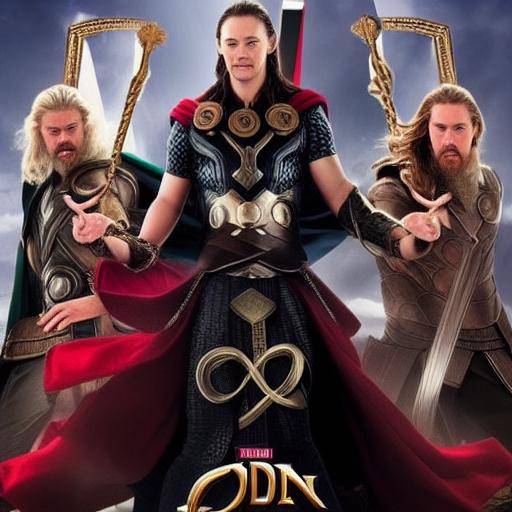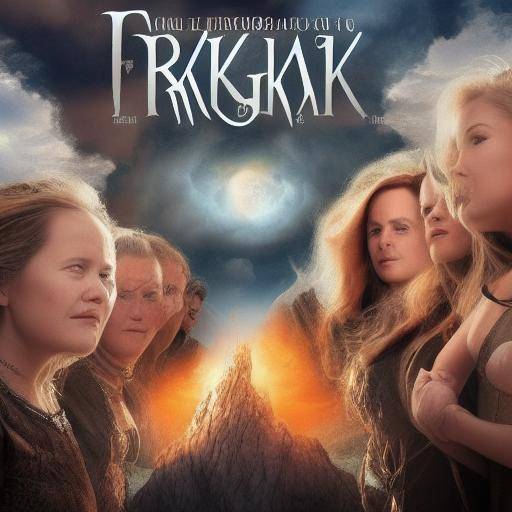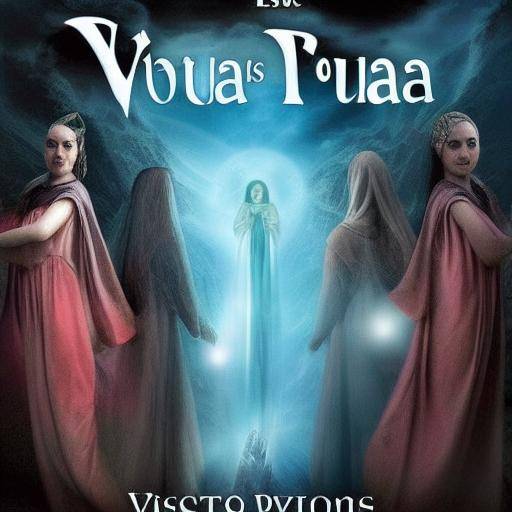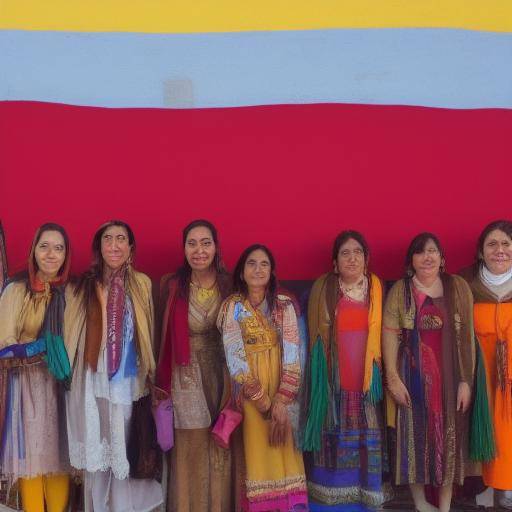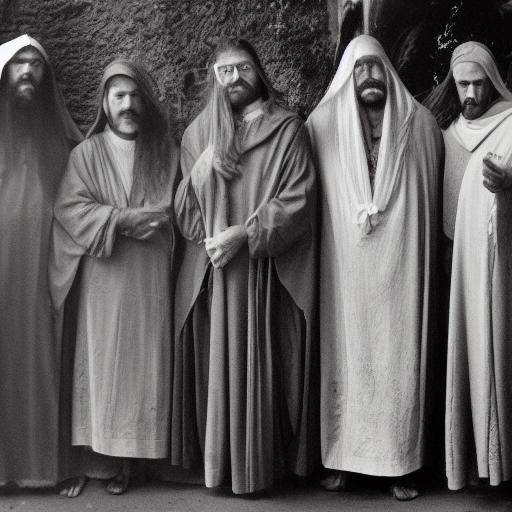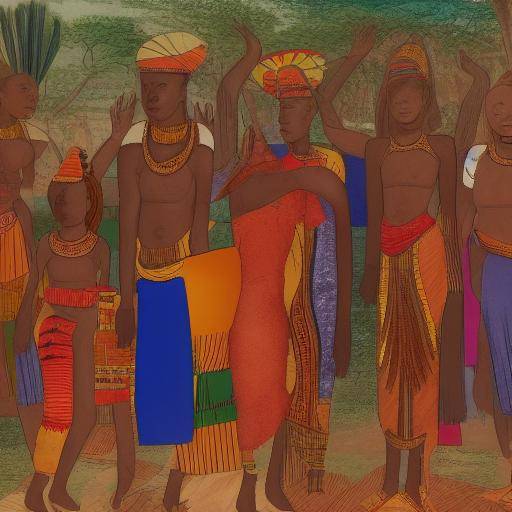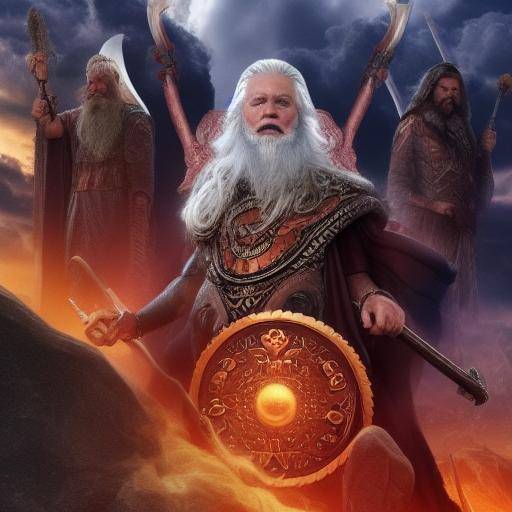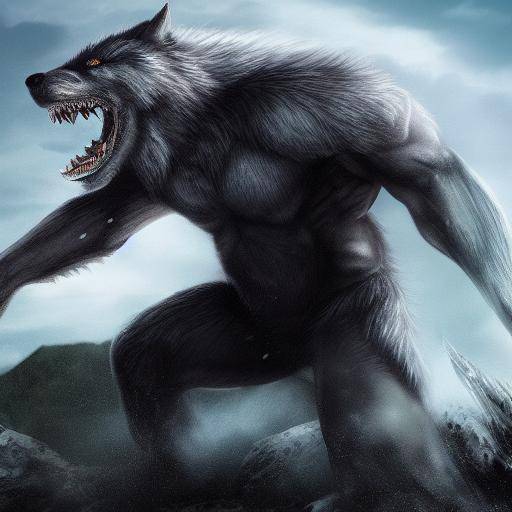
Introduction
In the Nordic mythology, the fearful wolf Fenrir occupies a prominent place in the prophecies of Ragnarök, the cataclysm that will mark the end of the gods and the world as we know it. In this article, we will explore Fenrir's fascinating history, as well as his relationship with Odin, prophecies and chaining. We will discover the cultural and mythological importance of this character, as well as its resonance today.
History and Background
Fenrir is a monstrous wolf, son of the god Loki and the gigantic Angrboda. Since their early appearance, the Nordic gods perceived their danger, which led them to seek different strategies to keep it under control. Fenrir's story is closely linked to the figure of Odin, the main god of the Nordic pantheon. Since childhood, Fenrir showed exponential growth, which increased fears about its destructive potential.
Fenrir's chaining represents a crucial element in Ragnarök's prophecies. It is predicted that in the inevitable end of the world, it will break its chains and unleash its fury by unleashing chaos and destruction. This moment represents a crucial point in Nordic mythology, as well as in the understanding of the eternal cycle of life and death.
Analysis in Deep
The role of Odin in Nordic mythology is fundamental in the relationship with Fenrir. Odin plays an ambiguous role in Fenrir's destiny, as he seeks to control his growth and destructive power, but at the same time contributes to the fulfillment of the prophecies announced by the Ragnarök.
Prophecies, particularly those related to Ragnarök, are an integral part of Nordic mythology. Through visions, dreams and accounts, the final destiny of the gods and the world has been transmitted. Fenrir's chaining is one of the most shocking prophecies that marks the advent of the end of the world as it is known.
Comprehensive review
Fenrir's chaining raises existential questions about destiny, free will and the role of the gods in the universe. It also reflects the presence of cyclical elements in Nordic mythology, where the end of the world is followed by a rebirth and a new beginning.
The comparison between Odin, the prophecies and the chaining of Fenrir reveals the complex interconnections between these elements. Through this comparison, we can understand how these aspects are intrinsically related, not only in Nordic mythology, but also in the understanding of destiny and transcendence in other cultures.
Practical Tips and Accessible Recommendations
Although the prophecies of Ragnarök are part of Nordic mythology, their influence on contemporary culture is evident in literature, cinema and other forms of artistic expression. Understanding the relevance of Fenrir, Odin and the prophecies of Ragnarök today allows us to explore the perpetuity of myths and their ability to generate deep reflections on the human condition.
Industry Perspectives and Expert Reviews
Various researchers and experts in Nordic mythology have deepened the importance of Fenrir, Odin and the prophecies of Ragnarök, offering different interpretations and approaches that enrich our understanding of these aspects. Through their contributions, the perspective on these elements is broadened and new layers of meaning and transcendence are revealed.
Case Studies and Applications in Real Life
In addition to its impact on popular culture, the prophecies of Ragnarök and the figure of Fenrir have been studied in different academic fields, from comparative mythology to psychology and philosophy. Case studies and applications in real life contribute to deepening the understanding of these elements from different approaches, allowing linkages between Nordic mythology and other aspects of human experience.
Future Trends and Predictions
The continuing relevance of Fenrir, Odin and the prophecies of Ragnarök in contemporary culture leads us to consider possible future evolutions and reinterpretations. As society continues to evolve, these elements are likely to continue to generate reflections and create new forms of artistic and cultural expression.
Conclusions
In short, Fenrir, the monstrous wolf of Ragnarök, represents much more than a character of the Nordic mythology. His story, his chaining and his relationship with Odin and the prophecies of Ragnarök invite us to reflect on the nature of destiny, rebirth and the transientness of things. Its influence endures over time, enriching our understanding of the past and offering inspiration for the future.
Frequently asked questions
What is the role of Odin in the fenrir chaining?
Odin plays an ambiguous role in the chaining of Fenrir, as it seeks to control its growth and destructive power, but at the same time it contributes to the fulfillment of the prophecies announced by the Ragnarök.
To what extent do the prophecies of Ragnarök influence contemporary culture?
The prophecies of Ragnarök have significantly influenced contemporary culture, especially in literature, cinema and other forms of artistic expression. Its relevance extends to reflection on human condition and destiny.
What is the meaning of Fenrir's chaining in Nordic mythology?
Fenrir's chaining represents a crucial element in Ragnarök's prophecies. It is expected that, at the inevitable end of the world, it will break its chains and unleash its fury, triggering chaos and destruction.
What lessons can be drawn from Fenrir's history in Nordic mythology?
The history of Fenrir in Nordic mythology offers deep reflections on destiny, rebirth and transcendence. His teachings invite to question the cyclical nature of the existence and role of the gods in the universe.
How have the experts interpreted the relationship between Odin, the prophecies and the chaining of Fenrir?
Different researchers and experts in Nordic mythology have deepened the importance of Fenrir, Odin and the prophecies of Ragnarök, offering different interpretations and approaches that enrich our understanding of these aspects.
What is the relevance of Fenrir, Odin and the prophecies of Ragnarök today?
The relevance of Fenrir, Odin and the prophecies of the Ragnarök today is reflected in its influence on popular culture, as well as in its consideration in academic and creative fields, which allows us to explore the perpetuity of myths and their ability to generate deep reflections on human condition.
With this immersion in Nordic mythology, we understand the transcendence of Fenrir, Odin and the prophecies of Ragnarök in Nordic mythology, its impact on contemporary culture and its continuing relevance in the reflection on the human nature and the evolution of the world.



